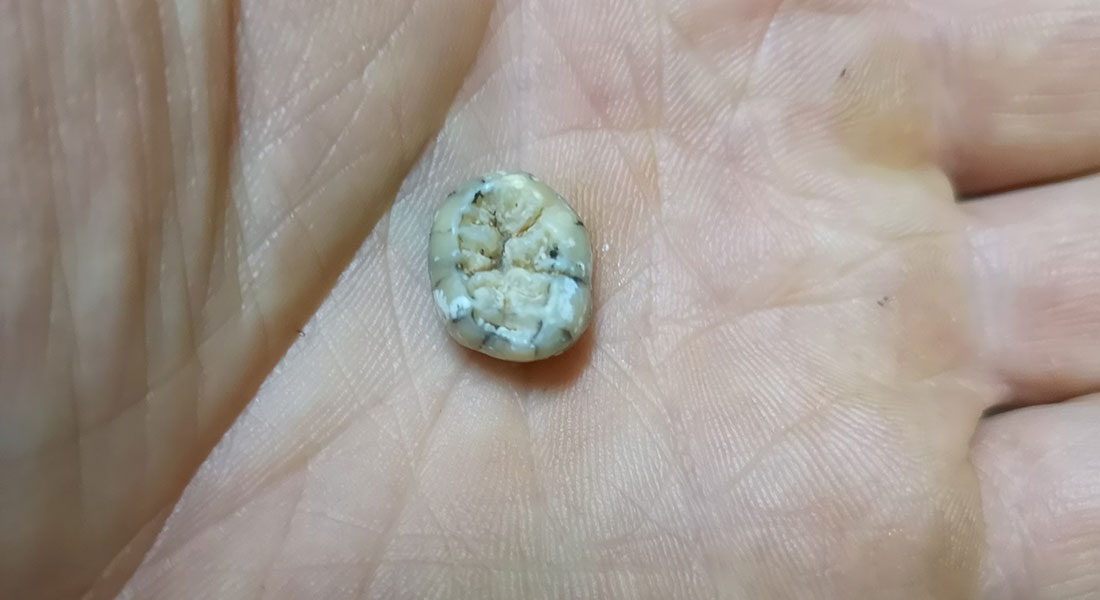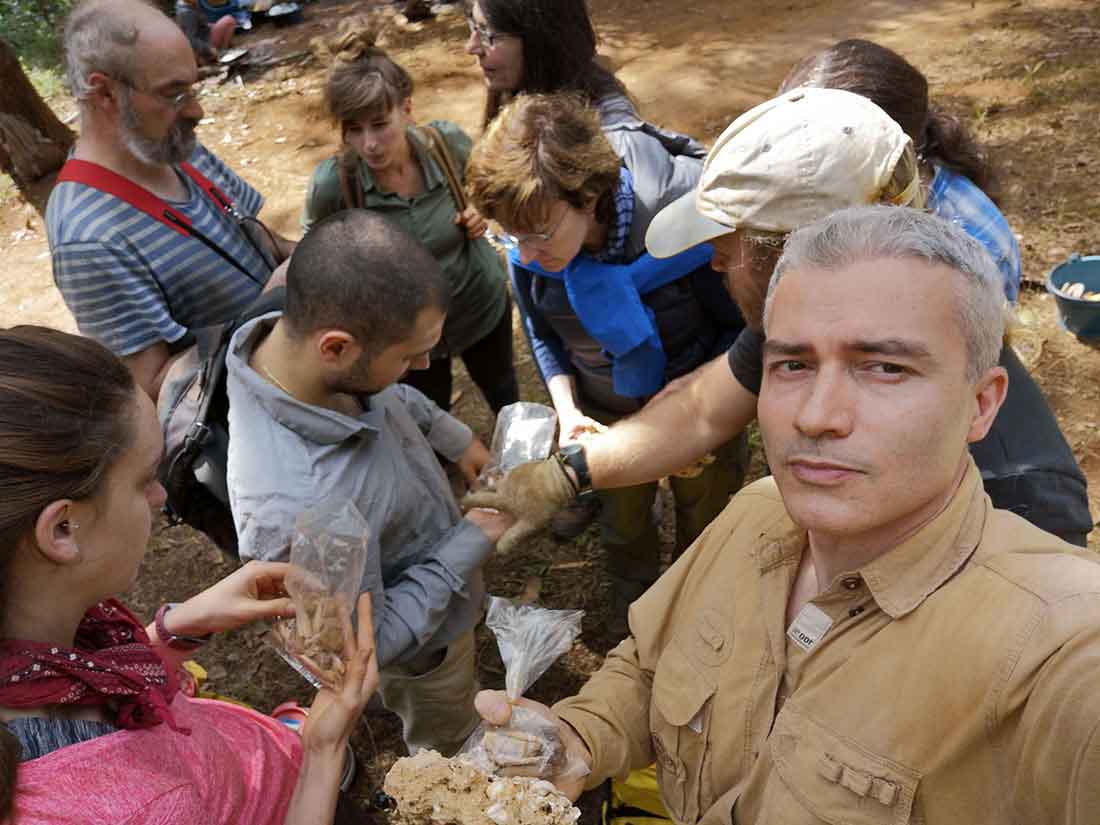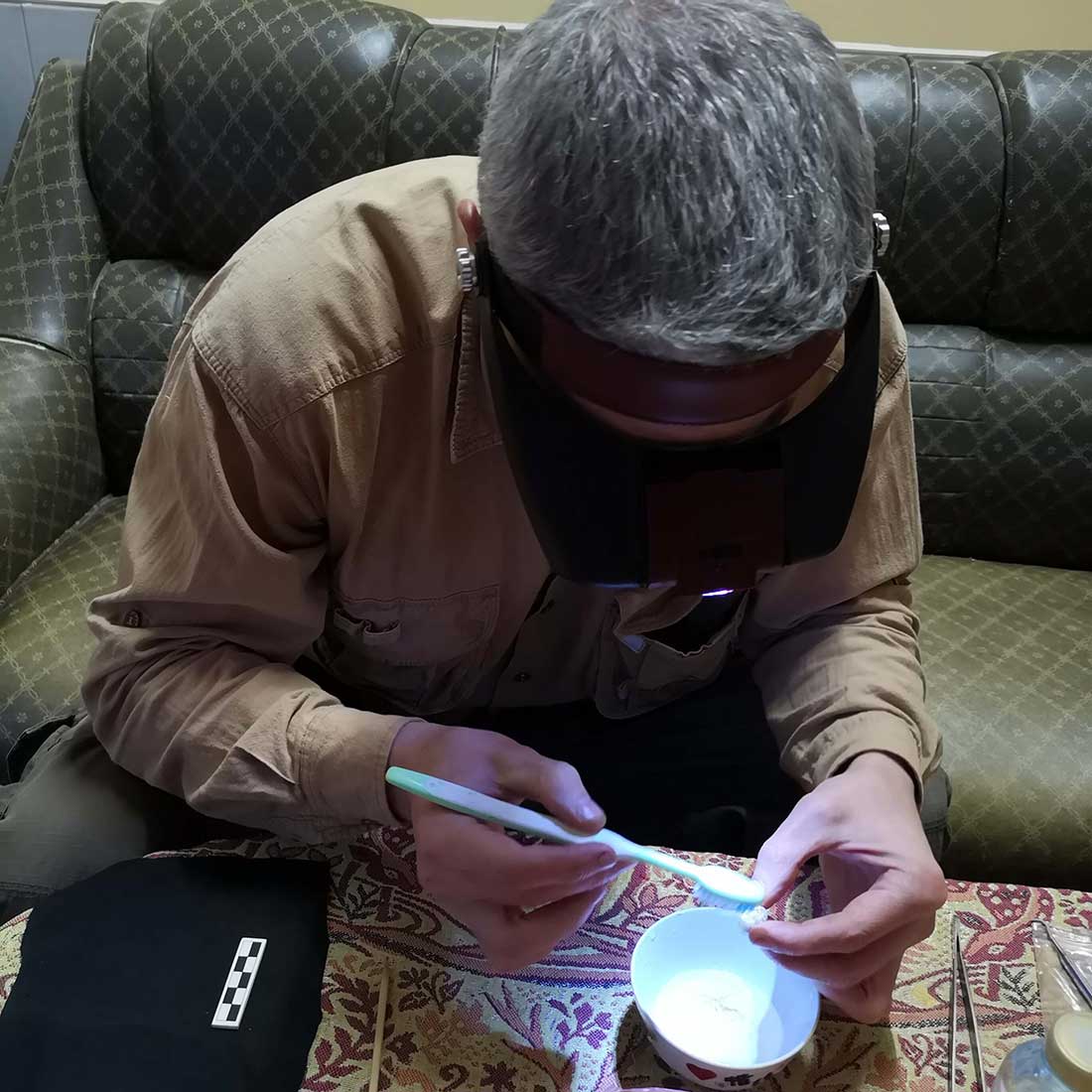The Denisovans not only lived in Siberia and the Himalayas, a new study reveals. The extinct human race had a rare ability to adapt to extreme climates.

Paleoanthropologist Fabrice Demeter could not believe his own eyes. The tooth that his team had found in a cave in northern Laos in 2018 was a human tooth. He could tell right away.
"It was just before lunch. My colleagues had taken the first sediment sample and within that piece of breccia, among fragments of animal teeth, we found the tooth," says Assistant Professor Fabrice Demeter from GeoGenetics at the Globe Institute.
The tooth was short, typical of humans, but the surface was heavily wrinkled. Therefore, Fabrice Demeter and his colleagues had no doubt that it was a molar from a human, but from a different species than ours.

"Using palaeoproteomics analysis in combination of geometric morphometric studies, we could determine that it is a molar from a Denisovan girl who lived about 164-130,000 years ago during the Middle Pleistocene. Because the molar had not erupted yet, hence not worn out, we could also with great certainty assess the girl's age to four-six years," says Fabrice Demeter, who together with his team has spent three years analysing the molar.
The first sign of the Denisovans was discovered in 2010, where researchers found a tip of a finger bone in the Altai Mountains of Siberia. The bone is about 40,000 years old. Since then, other researchers have shown that the right half of a lower jaw found in a cave in the Himalayas and dating from about 160,000 years ago also originates from the Denisovans.
Extreme cold in the mountains - heat and humidity in the tropics
Professor Eske Willerslev is head of the Willerslev Group at the University of Copenhagen, under which this new study was conducted in collaboration with an international team composed of researchers from France, Australia, the US and Laos. Eske Willerslev believes that the study fundamentally changes our knowledge of the Denisovans:
"We have almost no material from the Denisovans, and what has been found in the past stems from Siberia and the Himalayas, which are some very cold and high-altitude areas. This is the first time we have found anything this far south. The finding of the molar thus changes our understanding of the geographical distribution of the Denisovans."
During the late Middle to Late Pleistocene, five human species were contemporaneous: Homo erectus, Denisovans/Neanderthals, Homo floresiensis, Homo luzonensis and Homo sapiens. There are no extant species belonging to the first four groups, whereas modern humans, Homo sapiens, are the only extant species of the genus Homo.
The Denisovans and the Neanderthals had a common ancestor. They are both subgroups of the genus Homo.
Research has traditionally suggested that only modern humans were able to adapt to different climates.
"We used to see prehistoric people as very bad at spreading. We simply did not think they could," says Eske Willerslev and continues:
"But in recent years, we have seen that the Neanderthals may have been more widespread than previously thought. Now comes this study. It is more extreme than anything else is. Because whereas the Neanderthals went from cold to temperate climates, this study shows that the Denisovans were able to adapt to extremes. From the Himalayas, where it is cold, and down to the tropics."
The Denisovans are closely related to the Neanderthals
Fabrice Demeter and his colleagues have been exploring the area of northern Laos for 20 years. However, it is a hot and humid area, which makes it difficult to find well-preserved fossils.
But under good preservation conditions, bones and teeth can last for thousands of years in the area.
"Rainwater has washed bones and teeth, mud and soil into caves, where they have been compressed. That way, bones can survive in the tropical climate. And it was precisely in such a cave wall that we found the molar from the Denisovan girl," says Fabrice Demeter.

The Indochinese Peninsula has been on the anthropological research map since the 1900s. At that time, focus was on finding the missing link between apes and humans. In Indonesia and China, researchers had already found the missing link in the form of Homo erectus.
Due to the Indochina Wars from 1946 to 1991, researchers had to put excavations on hold. Nevertheless, from the beginning of the 1990s, the area regained interest, and over the past 40 years, the research has seen great progress due to collaborations with local scientists.
In 2012, Fabrice Demeter and his colleagues found remains of several Homo sapiens individuals in a cave called Tam Pà Ling, which means cave of the monkey, dating to about 60-70,000 years ago.

And just 50 metres from Tam Pà Ling, in the Cobra cave, Fabrice and his colleagues found the Denisovan molar in 2018.
From DNA analyses of the molar and the finger bone and jaw found earlier, researchers have found that the Denisovans were part of the Homo genus and closely related to the Neanderthals.
"It is a kind of Asian version of the Neanderthals. In fact, modern Aborigines, Philippine Negritos and Melanesians share five per cent of their DNA with the Denisovans, which is a high number. In comparison, Danes share less than 0.001 per cent of their DNA with the Denisovans and two per cent with the Neanderthals," says Fabrice Demeter and adds:
"Some of these modern populations living in the Himalayas can better adapt to high altitudes, and maybe this is the explanation. Maybe it is because they have a larger amount of Denisovan DNA in them."
Read the entire study, "A Middle Pleistocene Denisovan molar from the Annamite Chain of northern Laos", in Nature Communications.






